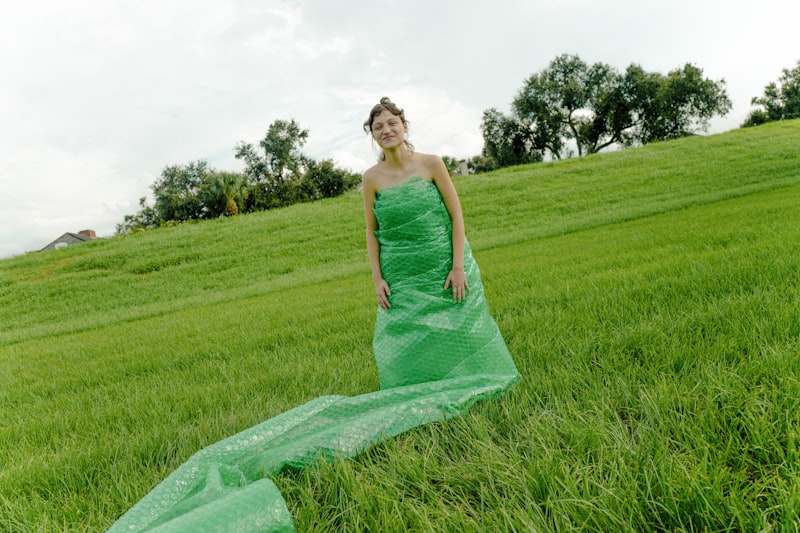The Impact of Sustainable Practices on Bridal Fashion
The Impact of Sustainable Practices on Bridal Fashion
The wedding industry is undergoing a significant transformation, particularly in bridal fashion. As consumers become more environmentally conscious, the demand for sustainable practices has influenced how bridal designers create their collections. This article explores the impact of sustainable practices on bridal fashion, the benefits of eco-friendly choices, and how couples can navigate the evolving landscape of sustainable wedding attire.
Understanding Sustainable Practices in Bridal Fashion
Sustainable practices in bridal fashion encompass various approaches aimed at reducing environmental impact. This includes using eco-friendly materials, adopting ethical manufacturing processes, and promoting circular fashion. By prioritizing sustainability, designers are not only appealing to a growing market of conscious consumers but also contributing to the wellbeing of the planet.
Key Components of Sustainable Bridal Fashion
| Component | Description |
| Eco-Friendly Materials | Fabrics like organic cotton, linen, and recycled polyester that significantly lower the carbon footprint. |
| Ethical Manufacturing | Fair labor practices that ensure workers are paid and treated well, promoting social responsibility. |
| Circular Fashion | Designs that are intended for reuse or recycling, minimizing waste in the bridal industry. |
| Local Production | Supporting local artisans and manufacturers to reduce transportation emissions and boost local economies. |
| Digital Innovation | Use of technology for virtual fittings and 3D printing, reducing the need for physical samples. |
The Benefits of Sustainable Bridal Fashion
Embracing sustainable practices in bridal fashion brings numerous benefits for both consumers and the environment. Here are some key advantages:
1. Environmental Benefits
By choosing sustainable bridal wear, couples can significantly reduce the environmental impact of their weddings. Eco-friendly materials and ethical production methods help to minimize water pollution, carbon emissions, and waste generation. For instance, organic cotton uses less water and pesticides compared to conventional cotton, making it a more sustainable choice for wedding gowns.
2. Unique and Customizable Designs
Sustainable bridal designers often focus on craftsmanship and individuality. Many offer customizable options that allow brides to create unique gowns tailored to their personal style. This emphasis on individuality not only results in one-of-a-kind pieces but also defies the fast fashion trend of mass production.
3. Social Responsibility
Choosing sustainable bridal fashion means supporting companies that prioritize ethical practices. Many sustainable brands are dedicated to fair labor practices, ensuring workers are paid fairly and work in safe conditions. Couples can feel good about their purchases, knowing they contribute to positive change within the industry.

How to Choose Sustainable Bridal Fashion
Couples looking to embrace sustainability in their wedding attire can follow these tips:
1. Research Sustainable Brands
Start by researching bridal designers known for their commitment to sustainability. Look for brands that openly share their values and production practices on their websites.
2. Opt for Vintage or Second-Hand Dresses
Consider exploring vintage shops or second-hand marketplaces for bridal gowns. Purchasing pre-loved dresses not only saves money but also reduces the demand for new production, which helps decrease waste.
3. Rent Instead of Buy
Rental services are becoming increasingly popular in the bridal fashion industry. Renting a dress can significantly lower costs and reduce environmental impact, allowing couples to use the funds saved for other aspects of their wedding.
4. Choose Local Artisans
Support local artisans who use sustainable practices in their creations. This not only boosts the local economy but also reduces transportation emissions associated with shipping products globally.
Emerging Trends in Sustainable Bridal Fashion
As the bridal industry continues to evolve, new trends are emerging that further highlight the importance of sustainability.
1. Use of Innovative Fabrics
The bridal fashion industry is witnessing the introduction of innovative, sustainable fabrics such as Tencel, made from sustainably sourced wood pulp, and Piñatex, a leather alternative made from pineapple leaf fibers. These materials provide an eco-friendly alternative while maintaining style and elegance.
2. Transparency in Supply Chains
Modern consumers demand transparency in the products they purchase. Many sustainable brands now offer insights into their supply chains, detailing where and how their materials are sourced and their production processes. This transparency fosters trust and encourages informed buying decisions.
3. Collaborations and Partnerships
Some bridal designers are collaborating with environmental organizations to promote awareness about sustainable practices. These partnerships often result in capsule collections that raise funds for environmental causes while offering stunning designs for brides-to-be.
A Real-World Example: The Impact of Sustainability on Celebrity Weddings
Several high-profile couples have made headlines for their sustainable wedding choices. For instance, celebrity weddings that feature eco-conscious bridal wear often set trends that inspire other couples. A notable example is the wedding of actor Ed Westwick, who opted for an eco-friendly bridal gown made from ethically-sourced materials. Such choices not only reflect personal values but also encourage fans and followers to consider sustainable options for their weddings.
Conclusion: Embrace Sustainable Bridal Fashion
As the demand for sustainable practices in bridal fashion continues to grow, couples have more options than ever to make environmentally responsible choices. From eco-friendly materials to ethical production methods, the impact of sustainability is reshaping how we view bridal wear. By considering the benefits of sustainable practices and following the tips outlined, couples can celebrate their love story while safeguarding the future of our planet.
Final Thoughts: Every choice counts. When it comes to bridal fashion, making informed, sustainable choices can leave a lasting impact. Whether you choose to shop local, rent, or select unique designs, embracing sustainability is a beautiful way to celebrate your special day.
Remember to seek out brands that align with your values, and don’t hesitate to ask questions about their practices. In doing so, you contribute to a more sustainable future for the bridal fashion industry and beyond.
